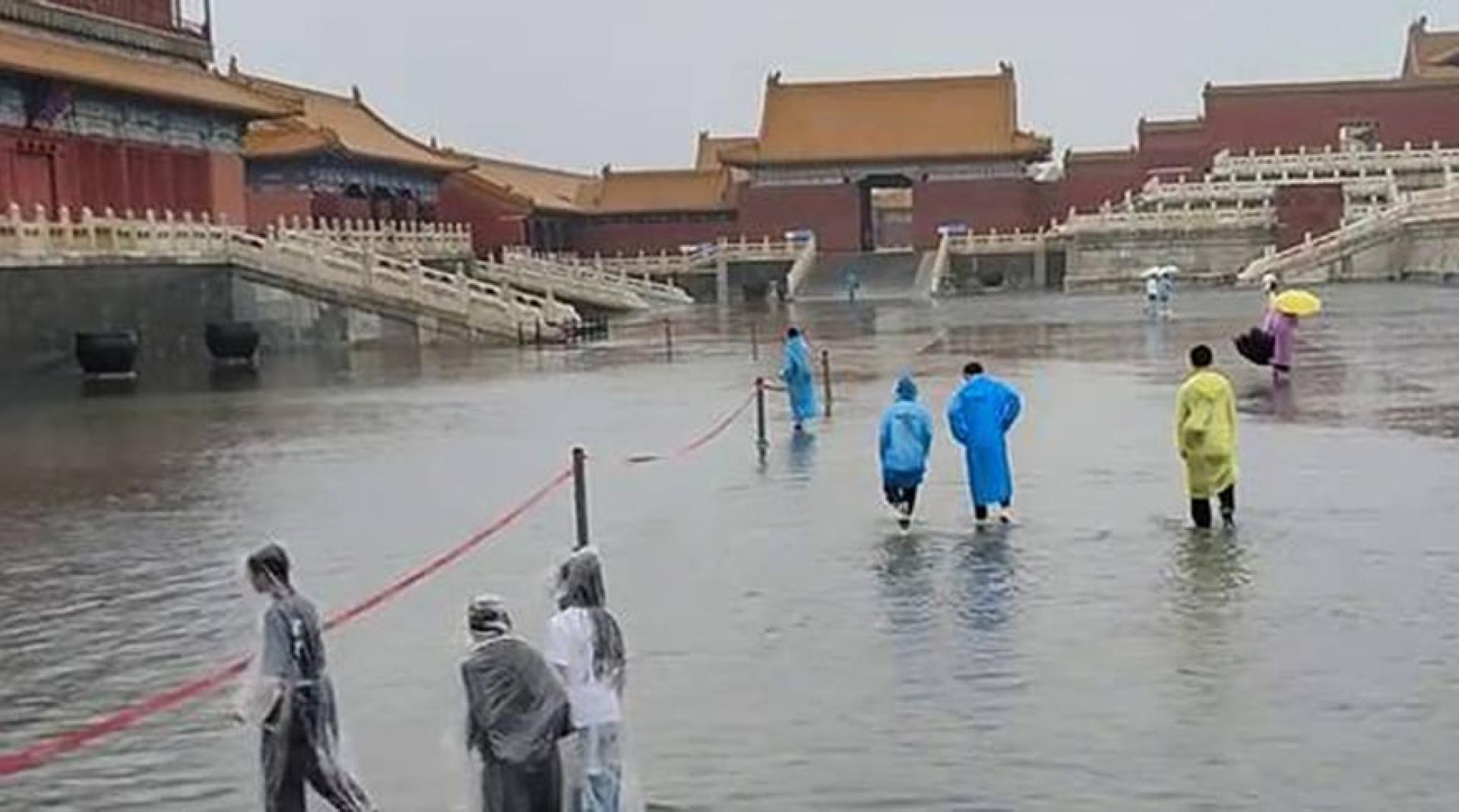Heavy rainstorms have caused disasters in North and Northeast China, with the capital Beijing experiencing continuous downpours that have resulted in at least 30 deaths. On the 29th, only limited public ground transportation services were available in the city, all suburban railways had halted operations, and some trains on the Jingha High-Speed Rail line were also suspended. Several museums and exhibition halls announced temporary closures.
Due to the heavy rainfall, the Palace Museum issued an announcement on the evening of the 28th, stating that, according to the latest notification from Beijing’s Flood Control Office and in compliance with the level-one flood control emergency response requirements, the Palace Museum would be closed for the entire day on July 29 to ensure visitor safety during the heavy rain. Ticket purchases already made will be automatically refunded through the original channel. Other institutions that also announced closure on the 29th include the National Museum of China, the Capital Museum, the Museum of the Chinese People's War of Resistance Against Japanese Aggression, the National Library of China, the Capital Library, the National Art Museum of China, the China Geological Museum, and the Beijing Central Axis Heritage Protection Center. In addition to those listed above, many other museums and exhibition halls in Beijing have also issued temporary closure notices.
According to China Railway sources, due to ongoing heavy rainfall and to ensure passenger transport safety, some trains on the Jingha High-Speed Rail line have been temporarily suspended on the 29th.
Miyun Reservoir Releases 120 Million Cubic Meters of Floodwater
With the ongoing heavy rain, water levels upstream of the Miyun Reservoir in Beijing’s suburbs have risen significantly, with inflows totaling 730 million cubic meters. Since the day before yesterday, the reservoir has started releasing floodwater, with a total discharge of 120 million cubic meters.
